 W
WThe 29th Motor Torpedo Boat Flotilla was a motor torpedo boat (MTB) flotilla manned and crewed by Royal Canadian Navy (RCN) reservists in service with the Coastal Forces of the Royal Navy during the Second World War. The 29th MTB Flotilla had a short & distinguished history in the English Channel, including action during the landings at Normandy in 1944.
 W
W870 Naval Air Squadron, also known as VF-870, was a squadron of the Royal Canadian Navy (RCN). It was formed when 803 Naval Air Squadron of the Royal Navy was renumbered to 870 NAS on 1 May 1951. It operated throughout the 1950s and early 1960s before disbanding on 7 September 1962. It was the first RCN squadron to operate jet aircraft.
 W
WRobert Heriot Barclay was a British naval officer who was engaged in the Napoleonic Wars, and its North American counterpart, the War of 1812.
 W
WThe British Pacific Fleet (BPF) was a Royal Navy formation that saw action against Japan during the Second World War. The fleet was composed of Commonwealth naval vessels. The BPF formally came into being on 22 November 1944 from the remaining ships of the former Eastern Fleet then being re-named the East Indies Fleet and continuing to be based in Trincomalee. The British Pacific Fleet's main base was at Sydney, Australia, with a forward base at Manus Island. One of the largest fleets ever assembled by the Royal Navy, by Victory over Japan Day it had four battleships and six fleet aircraft carriers, fifteen smaller aircraft carriers, eleven cruisers and numerous smaller warships, submarines, and support vessels.
 W
WRFA Fort Charlotte (A236) was a stores issuing ship of the Royal Fleet Auxiliary.
 W
WBurrard Dry Dock Ltd. was a Canadian shipbuilding company headquartered in North Vancouver, British Columbia. Together with the neighbouring North Van Ship Repair yard and the Yarrows Ltd. yard in Esquimalt, which were eventually absorbed, Burrard built over 450 ships, including many warships built and refitted for the Royal Navy and Royal Canadian Navy in the First and Second World Wars.
 W
WAs the Second World War drew to a close the Royal Canadian Navy (RCN) stopped its rapid expansion and dramatically reduced military expenditures. This resulted in a significant reduction in personnel and ships by 1947. With the emergence of the Cold War and the formation of the North Atlantic Treaty Organization, followed by the outbreak of the Korean War, the Canadian government increased military spending. The RCN recommissioned and modified Second World War ships held in reserve, launched new classes of ships, and upgraded its aviation capabilities. The List of Royal Canadian Navy ships of the Cold War lists the surface warships, submarines and auxiliary vessels in service from the Korean War through to 1991. It includes all commissioned, non-commissioned, loaned or hired ships. and all ships crewed by RCN personnel under the command of the RCN.
 W
WThe Royal Canadian Navy expanded rapidly and substantially during the Second World War, with vessels transferred or purchased from the Royal Navy and US Navy, and the construction of many vessels in Canada, such as corvettes and frigates. The RCN ended the war with the third-largest naval fleet in the world, and an operational reach extending into the Atlantic, Pacific, Caribbean and Mediterranean. The List of Royal Canadian Navy ships of the Second World War lists over 1,140 surface warships, submarines and auxiliary vessels in service during the war. It includes all commissioned, non-commissioned, loaned or hired ships, and all ships crewed by RCN personnel, including 30 depot ships, under the command of the RCN.
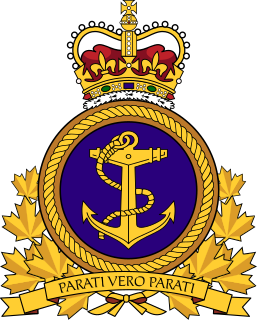 W
WThe Royal Canadian Navy is the naval force of Canada. The RCN is one of three environmental commands within the Canadian Armed Forces. As of 2017, the Royal Canadian Navy operates 12 frigates, 4 attack submarines, 12 coastal defence vessels and 8 patrol/training vessels, as well as several auxiliary vessels. The Royal Canadian Navy consists of 8,500 Regular Force and 5,100 Primary Reserve sailors, supported by 5,300 civilians. Vice-Admiral Art McDonald is the current Commander of the Royal Canadian Navy and Chief of the Naval Staff.
 W
WThe Coastal Forces of the Royal Canadian Navy (RCN) was a specialized naval force of well-armed, small and fast motor launch (ML) and motor torpedo boat (MTB) flotillas, primarily manned by members of the Royal Canadian Naval Volunteer Reserve (RCNVR). Tasked with escort, coastal defence, anti-submarine, minesweeping and search and rescue duties, the Coastal Forces of the RCN contributed to securing Allied sea lines of communication off the coasts of Canada and Britain during the Second World War.
 W
WThe Compagnies Franches de la Marine were an ensemble of autonomous infantry units attached to the French Royal Navy bound to serve both on land and sea. These troupes constituted the principal military force of France capable of intervening in actions and holding garrisons in outre-mer (overseas) from 1690 to 1761. Independent companies of the navy and colonial regulars, were under the authority of the French Minister of Marine, who was also responsible for the French navy, overseas trade, and French colonies.
 W
WEsquimalt Royal Naval Dockyard was a major British Royal Navy yard on Canada's Pacific coast from 1842 to 1905, subsequently operated by the Canadian government to the present day.
 W
WSS Fort Camosun was a coal-burning 7000-ton freighter, built in Victoria, British Columbia, Canada in 1942. In June of 1942, during World War 2, she departed Victoria Harbour on her maiden voyage to England with zinc, lead, plywood, timber and other raw materials. On 20 June 1942 the Japanese submarine I-25, under the command of Commander Meiji Tagami, torpedoed the Fort Camosun while she was 70 miles south-southwest of Cape Flattery. Fort Camosun was torpedoed just eleven hours out of port at 11:00pm. The torpedo hit the number two hold on the port side. The crew abandoned ship into the remaining good lifeboats. The submarine then surfaced used deck guns to fire 18 shells at the Fort Camosun causing further damage to the ship. While badly damaged the Fort Camosun did not sink, as she was loaded with plywood, timber and other floatable cargo. The crew radioed for help and later an American Flying Fortress located the crew. Later in the day HMCS Edmundston rescued the 31 crew of the sinking Fort Camosun. The Fort Camosun was towed to safety by HMCS Quesnel to Neah Bay. The Fort Camosun was low in the water and was towed with the help of the tugboat Henry Foss from Tacoma, US Navy tug USS Tatnuck and the tugboat Salvage Queen. Fort Camosun reached Neah Bay, later she was towed to Esquimalt B.C. At Esquimalt she was put in dry dock and temporary repairs were made. Fort Camosun repaired took timber to England, via Guantanamo and New York. On the way to England an U-Boat attacked her convoy in the Atlantic. As she was passing through the North Channel alone a German aircraft tried to bomb her, but the bomb landed clear of the ship. Later she survived another torpedo attack in the Gulf of Aden.
 W
WSir John Franklin was a British Royal Navy officer and Arctic explorer. After serving in wars against Napoleonic France and the United States, he led two expeditions into the Canadian Arctic, in 1819 and 1825, and served as Lieutenant-Governor of Van Diemen's Land from 1839 to 1843. During his third and final expedition to force the Northwest Passage in 1845, Franklin's ships became icebound off King William Island in what is now Nunavut, where he died in June 1847. The icebound ships were abandoned ten months later and the entire crew died, from causes such as starvation, hypothermia, and scurvy.
 W
WThe GIUK gap is an area in the northern Atlantic Ocean that forms a naval choke point. Its name is an acronym for Greenland, Iceland, and the United Kingdom, the gap being the open ocean between these three landmasses. The term is typically used in relation to military topics. The area has been considered strategically important since the beginning of the 20th century.
 W
WGreen Hill Park was a freighter, built in 1943, that exploded, and burst into flames, in Vancouver, British Columbia's harbour, on March 6, 1945. According to a 2013 retrospective article, in the Vancouver Sun, this was Vancouver's worst disaster, at the time it occurred.
 W
WThe Halifax VE-Day riots, 7–8 May 1945 in Halifax and Dartmouth, Nova Scotia began as a celebration of the World War II Victory in Europe. This rapidly evolved into a rampage by several thousand servicemen, merchant seamen and civilians, who looted the City of Halifax. Although a subsequent Royal Commission chaired by Justice Roy Kellock blamed lax naval authority and specifically Rear-Admiral Leonard W. Murray, it is generally accepted that the underlying causes were a combination of bureaucratic confusion, insufficient policing, and antipathy between the military and civilians, fueled by the presence of 25,000 servicemen who had strained Halifax wartime resources to the limit.
 W
WWilliam Nelson Edward Hall was the first Black person, first Nova Scotian, and third Canadian to receive the Victoria Cross. He received the medal for his actions in the Siege of Lucknow during the Indian Rebellion. Hall and an officer from his ship continued to load and fire a 24-pounder gun at the walls after the rest of the party had been killed or injured by the defenders.
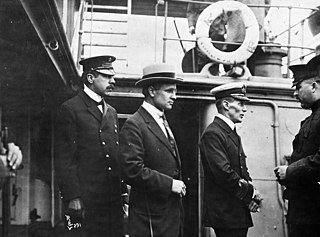 W
WRear Admiral Walter Hose, was an officer of the Royal Navy (RN), the Royal Canadian Navy (RCN) and founder of the Royal Canadian Naval Volunteer Reserve (RCNVR).
 W
WSS Jasper Park was a Park ship freighter, built in 1942. She was sunk by torpedo from German submarine U-177 on 6 July 1943, the first Park ship lost to enemy action. She was completed on 24 September 1942, by the company Davie Shipbuilding in Lauzon, Quebec. Her hull number is 537. Davie Shipbuilding is now called Chantier Davie Canada Inc. The ship was owned by the Park Steamship Company, which was owned by Canada's Federal government. The government had built 400 vessels during World War II. Built as a merchant steamship constructed for Canada’s Merchant Navy in 1944. She was named after Jasper National Park in the Canadian Rockies in the province of Alberta, Canada.
 W
WThe Kingston Royal Naval Dockyard was a Royal Navy Dockyard from 1788 to 1853 in Kingston, Ontario, Canada, at the site of the current Royal Military College of Canada.
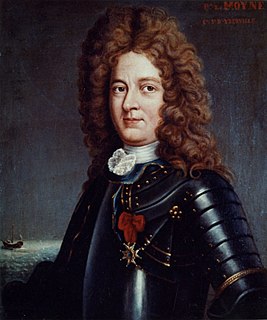 W
WPierre Le Moyne d'Iberville was a soldier, ship captain, explorer, colonial administrator, knight of the order of Saint-Louis, adventurer, privateer, trader, member of Compagnies Franches de la Marine and founder of the French colony of Louisiana in New France. He was born in Montreal of French colonist parents.
 W
WHMHS Llandovery Castle, built in 1914 in Glasgow as RMS Llandovery Castle for the Union-Castle Line, was one of five Canadian hospital ships that served in the First World War. On a voyage from Halifax, Nova Scotia to Liverpool, England, the ship was torpedoed off southern Ireland on 27 June 1918. The sinking was the deadliest Canadian naval disaster of the war. 234 doctors, nurses, members of the Canadian Army Medical Corps, soldiers and seamen died in the sinking and subsequent machine-gunning of lifeboats. Only 24 people, the occupants on a single life-raft, survived. The incident became infamous internationally and was considered, after the Armenian Genocide, as one of the war’s worst atrocities. After the war, the case of Llandovery Castle was one of six alleged German war crimes prosecuted at the Leipzig trials.
 W
WHMCS Malahat is a Royal Canadian Navy Reserve Division (NRD) located in Victoria, British Columbia. Dubbed a stone frigate, HMCS Malahat is a land-based naval training establishment for part-time sailors as well as a local recruitment centre for the Canadian Naval Reserve. It is one of 24 naval reserve divisions in major cities across Canada.
 W
WThe Naval Aid Bill was a bill introduced in the House of Commons of Canada, by Conservative Prime Minister Robert Borden on December 5, 1912.
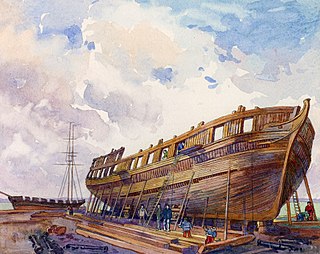 W
WNaval Shipyards, York was one of the shipyards of the Royal Navy on Lake Ontario.
 W
WNavy Hall is a wooden structure encased within a stone structure that was the site of Upper Canada's (Ontario's) first provincial parliament, from 1792–1796. It is a unit of Fort George National Historic Site located in Niagara-on-the-Lake, Ontario, then known as Newark, Upper Canada. It sits on Ricardo Street near the shore of the Niagara River, near Fort George, and across the river from Fort Niagara.
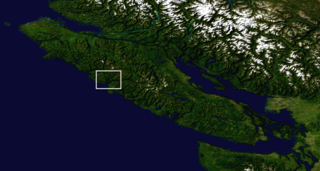 W
WThe Nootka Crisis, also known as the Spanish Armament, was an international incident and political dispute between the Spanish Empire, the Kingdom of Great Britain, and the fledgling United States of America triggered by a series of events that took place during the summer of 1789 at the Spanish outpost Santa Cruz de Nuca, in Nootka Sound, present-day British Columbia, Canada. The commander of the outpost, Jose Esteban Martínez, seized some British commercial ships which had come for the maritime fur trade and to build a permanent post at Nootka Sound. Public outcry in England led to the mobilization of the British and Spanish navies and the possibility of war. Both sides called upon allies, and although Spain's key ally France also mobilized their navy, they soon announced they would not go to war. Without French help Spain had little hope against the allied forces of the British and the Dutch, resulting in Spain seeking a diplomatic solution and making concessions.
 W
WOperation Friction was a Canadian military operation that saw the contribution of 4,500 Canadian Forces personnel to the 1991 Gulf War. The larger US components were Operation Desert Shield and Operation Desert Storm.
 W
WPark ships were merchant steamships constructed for Canada’s Merchant Navy during the Second World War. Park ships and Fort ships were the Canadian equivalent of the American Liberty ships. All three shared a similar design by J.L. Thompson and Sons of Sunderland, England. Fort ships had a triple expansion steam engine and a single screw propellor. Fort ships were ships transferred to the British Government and the Park ships were those employed by the Canadian Government, both had the similar design. Park ships were named after local and National Parks of Canada. A few Park ships were launched as "Camp ships", named after Canada military camps, but were quickly renamed after Parks. Jasper Park was first Park ship lost to enemy attack, in the Indian Ocean after a torpedo attack from U-177 in the Indian Ocean, South of Durban, South Africa.
 W
WThe Penobscot Expedition was a 44-ship American naval armada during the Revolutionary War assembled by the Provincial Congress of the Province of Massachusetts Bay. The flotilla of 19 warships and 25 support vessels sailed from Boston on July 19, 1779 for the upper Penobscot Bay in the District of Maine carrying an expeditionary force of more than 1,000 American colonial marines and militiamen. Also included was a 100-man artillery detachment under the command of Lt. Colonel Paul Revere.
 W
WCaptain Frederick Thornton "Fritz" Peters & Bar was a Canadian-born recipient of the Victoria Cross, the highest award for valour in the face of the enemy that can be awarded to British and Commonwealth forces.
 W
WRear Admiral Desmond William Piers, was a rear-admiral in the Royal Canadian Navy. Born in Halifax and long-time resident of Chester, Nova Scotia, Piers served in the RCN from 1932 to 1967. In 1930, he was the first graduate of the Royal Military College of Canada to join the RCN. He became agent general of Nova Scotia in the United Kingdom in 1977.
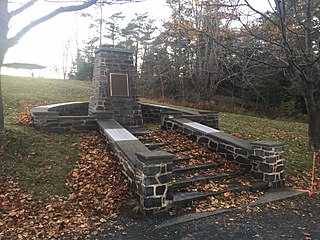 W
WSS Point Pleasant Park was a merchant steamship constructed for Canada’s Merchant Navy in 1942 during the Second World War as part of Canada's Park ship program. She carried a variety of wartime cargoes to Atlantic and Indian Ocean ports until the German submarine U-510 sank her off the coast of South Africa on 23 February 1945 as Point Pleasant Park was sailing independently from Saint John, New Brunswick to Cape Town. Point Pleasant Park was the last vessel sunk in South African waters during the Second World War.
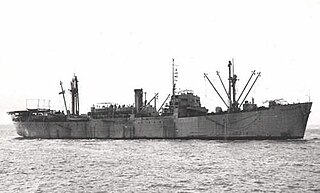 W
WRFA Fort Duquesne (A229) was an air stores ship of the Royal Fleet Auxiliary a Fort type ship.
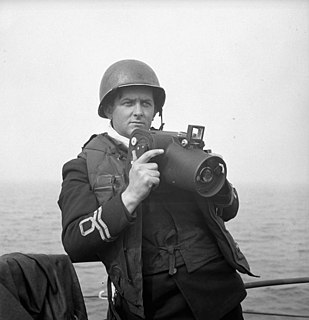 W
WThe Royal Canadian Navy Volunteer Reserve (RCNVR) was a naval reserve force of the Royal Canadian Navy, which replaced the Royal Navy Canadian Volunteer Reserve (RNCVR).
 W
WThe Royal Canadian Navy (RCN) is tasked to provide maritime security along the Pacific, Atlantic and Arctic coasts of Canada, exercise Canada's sovereignty over the Arctic archipelago, and support Canada's multi-national and bilateral interests overseas. It comprises the Pacific Fleet at Canadian Forces Base (CFB) Esquimalt, and the Atlantic Fleet at CFB Halifax. CFB Esquimalt is located on Vancouver Island, in British Columbia, and is home to 15 vessels and 6,000 staff, the headquarters for Maritime Forces Pacific, Her Majesty's Canadian (HMC) Dockyard Esquimalt, Fleet Maintenance Facility – Cape Breton (FMF-CB), Fire Fighting and Damage Control School, the Naval Officer Training Centre, and extensive housing. CFB Halifax is home port for the 18 vessels of the Canadian Atlantic Fleet and situated in Halifax, Nova Scotia. CFB Halifax employs 7,000 civilians and military staff, and hosts the Canadian Atlantic Fleet headquarters, HMC Dockyard Halifax, FMF Cape Scott, extensive maritime research facilities, an ammunition depot, and the four maritime squadrons of the Royal Canadian Air Force that deploy helicopters aboard ships. The Canadian Armed Forces are currently constructing a new naval facility at Nanisivik, Baffin Island, to provide a summer port for RCN patrols in the Canadian arctic.
 W
WThe Royal Canadian Navy Monument is a small memorial park located at Richmond Landing, next to the Ottawa River in Ottawa, Ontario, Canada. It commemorates the men and women who have served or are currently serving in the Royal Canadian Navy. The monument was designed by artist Al McWilliams and architects Joost Bakker and Bruce Haden, and was officially opened by then Prime Minister of Canada, Stephen Harper, on 3 May 2012.
 W
WThe Royal Naval Canadian Volunteer Reserve (RNCVR) was a naval reserve that was established in Canada in May 1914 and existed until 1923. Initially divided into three subdivisions stretching across the nation, the RNCVR could serve either with the Royal Canadian Navy or the Royal Navy during wartime. During the First World War, an Overseas Division was created and by the end of the war, over 8,000 men served either in Canadian service or abroad. Following the war, the reservists were demobilized and Canada's volunteer reserve was reorganized into the Royal Canadian Naval Volunteer Reserve.
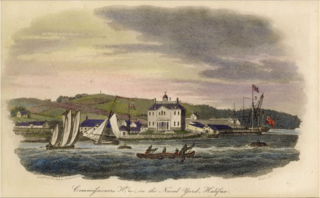 W
WRoyal Naval Dockyard, Halifax was a Royal Navy base in Halifax, Nova Scotia. Established in 1759, the Halifax Yard served as the headquarters for the Royal Navy's North American Station for sixty years, starting with the Seven Years' War. The Royal Navy continued to operate the station until it was closed in 1905. The station was sold to Canada in 1907 becoming Her Majesty's Canadian Dockyard, a function it still serves today as part of CFB Halifax.
 W
WAdmiral Sir Charles Saunders, KB was a Royal Navy officer. He commanded the fourth-rate HMS Gloucester and led her in action at the Second Battle of Cape Finisterre in October 1747 during the War of the Austrian Succession. After serving as Commander-in-Chief, Mediterranean Fleet, he was appointed Commander-in-Chief, English Channel in charge of the Western Squadron between October 1758 and May 1759). He took command of the fleet tasked with carrying James Wolfe to Quebec in January 1759 and consolidated the dead general's victory after the Battle of the Plains of Abraham in September 1759 by devoting great energy to keeping the British Army, now under the command of Colonel George Townshend, well supplied during the Seven Years' War. He later became Senior Naval Lord and then First Lord of the Admiralty.
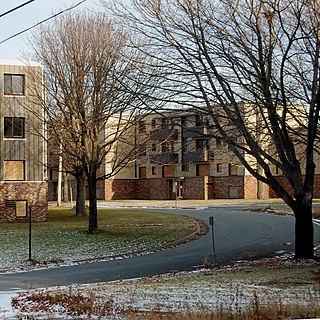 W
WShannon Park is an urban neighbourhood and former national defence site in the north end of Dartmouth on the eastern shore of Halifax Harbour in the Halifax Regional Municipality (HRM) in Nova Scotia, Canada. It is immediately south of the A. Murray MacKay Bridge in the community of Dartmouth. It straddles Highway 111, a CN Rail freight line, and Halifax Harbour. It is bordered on the south by Tuft's Cove.
 W
WTaber Park was a Park ship freighter, built in 1944. She was sunk by torpedo from a German submarine U-boat on March 13, 1945. She was completed on 28 August 1944, by the company Foundation Maritime, in the Pictou Shipyard in Pictou County, Nova Scotia, Canada. Her hull # is 16. The ship was owned by the Park Steamship Company, which was owned by Canada's Federal government. The government had built 400 vessels during World War II. Built as a merchant steamship constructed for Canada’s Merchant Navy in 1944. She was named after an actual park in Canada, in the province of Alberta. She was operated for the Government by Canada Shipping Company. Taber Park should not to be taken as the Tabor Park a Norway cargo ship that was torpedoed, shelled and sunk in the Indian Ocean on 9 March 1943.
 W
WJohn Wallace Thomas CBE (1888–1965) was a Newfoundland merchant mariner who served with distinction in the First and Second World Wars.
 W
WWallis Heights is a Canadian urban neighbourhood in Nova Scotia's Halifax Regional Municipality.
 W
WYarrow Shipbuilders Limited (YSL), often styled as simply Yarrows, was a major shipbuilding firm based in the Scotstoun district of Glasgow on the River Clyde. It is now part of BAE Systems Surface Ships, owned by BAE Systems, which has also operated the nearby Govan shipyard since 1999.
 W
WSir James Lucas Yeo,, was a British naval commander who served in the War of 1812. Born in Southampton, he joined the Royal Navy at the age of 10 and saw his first action in the Adriatic Sea. He distinguished himself in combat multiple times, most notably during the Portuguese conquest of French Guiana, earning knighthoods in the Portuguese Order of Aviz and the British Order of the Bath. Given command of the frigate Southampton, in 1812 his ship was wrecked in the Bahamas—he was acquitted of blame for its loss. Yeo was then given command of the squadron on Lake Ontario, commanding it in several engagements with the Americans.